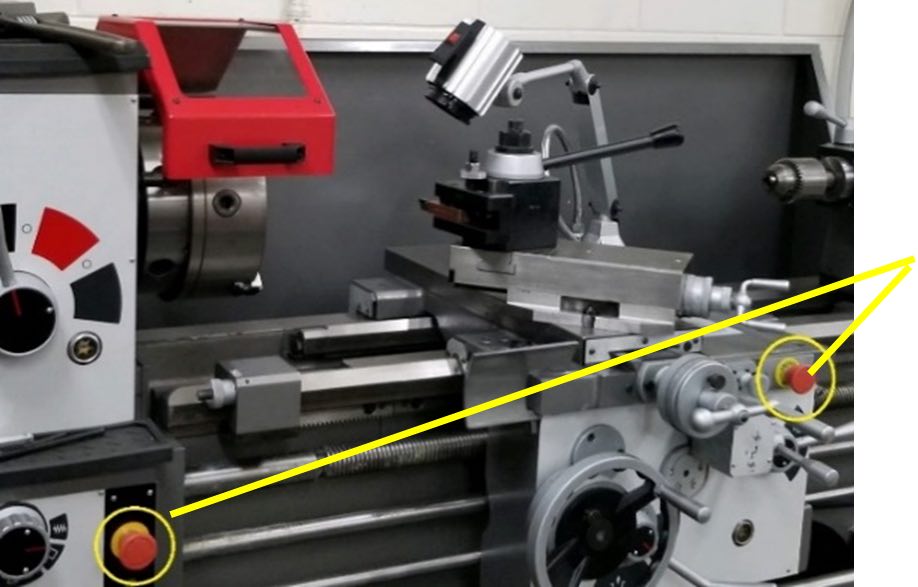
A Comprehensive Guide to Lathe Machine Safety and Operating Procedures
Lathe machines are essential equipment in many industrial and manufacturing settings. These machines shape, cut, and form materials into various components and products. In this article, we’ll look at the definition of a lathe machine, the different types of lathes available, common hazards associated with them and how to avoid them, best safety controls for operating one, step-by-step instructions on how to safely operate a lathe machine and tips for maintaining a lathe machine and extending its lifespan.
What is a Lathe Machine – Definition and Parts
A lathe is a tool that rotates an object to perform various operations such as cutting, sanding, or drilling. It comprises a headstock, tailstock, tool post, carriage, and bed. The headstock houses the motor that drives the rotation of the workpiece. The tailstock holds the cutting tools in place for precise machining. The tool post is where the cutting tools are mounted and adjusted. The carriage holds and moves the cutting tools along the length of the lathe as it rotates the workpiece. And finally, the bed serves as a base for all these components to rest on.
Types of Lathe Machines – Bench, Engine, and Turret
Three main types of lathes are available: bench, engine, and turret. Bench lathes are designed primarily for hobbyists or small parts production, while engine lathes are used for more complex workpieces and higher production runs. Turret lathes feature a rotating turret that enables several tools to be used in succession without stopping the machine and manually changing out cutting tools.
Common Hazards Associated with Lathes and How to Avoid Them
Lathe machines can present significant safety risks if not properly operated or maintained. The most common hazards associated with lathes include broken parts, flying objects, noise pollution, choking/crushing injuries, burns from hot chips, and slipping due to wet floors. Always wear protective gear such as closed-toe shoes, eye protection glasses, and gloves while operating a lathe machine to minimize these risks. Make sure the workspace is well-lit and free of any trip hazards. Keep all tools and machine parts in good working order and away from the reach of children. Finally, be sure to check the lathe’s speed before each use and avoid sudden changes in direction when operating.
Best Safety Controls for Operating a Lathe Machine
The best way to ensure the safe operation of a lathe machine is to use appropriate safety controls. Start by installing guards or shields around any moving parts on the machine. These will help protect operators from contact with hot chips or flying debris. Next, please set up your workspace with a no-climb zone (a 3-foot radius area around the lathe where no one should step inside) and mark it with signage. Be sure to establish a clear lock-out/tag-out (LOTO) procedure that specifies how and when to shut off the power supply for maintenance and repairs on the lathe.
Step-by-Step Instructions on How to Safely Operate a Lathe Machine
- Wear your required safety gear: closed-toe shoes, eye protection glasses, gloves, etc.
- Check the speed of the lathe before turning it on.
- Ensure all tools are in working order and adequately mounted onto the lathe machine.
- Ensure your workspace is well-lit and free from trip hazards or debris.
- Engage the LOTO procedure to access moving parts or repair the lathe.
- Turn on the power supply and start running your program or perform manual cuts as required.
- Adjust the cutting tools as needed to achieve the desired results.
- Stop the lathe machine when done and turn off its power supply.
- Clean up any debris from your workspace and store tools safely away from children’s reach.
Tips for Maintaining a Lathe Machine and Extending Its Lifespan
Regular maintenance is critical for ensuring the safe operation of a lathe machine and extending its lifespan. Here are some tips for proper maintenance:
- Check all guards, shields, and covers before each use to make sure they are in place and working properly
- Clean and lubricate the bed, carriage, and other moving parts regularly
- Tighten all screws and nuts periodically to ensure they remain in place
- Perform regular inspections to check for any signs of wear or damage
- Change out cutting tools as soon as they start to become dull or damaged
- Ensure your workspace is organized and tidy to reduce the risk of accidents.
By following these steps and tips, operators can help keep their lathe machines running safely and efficiently for a long time. Always remember to keep safety first when operating any machinery!



